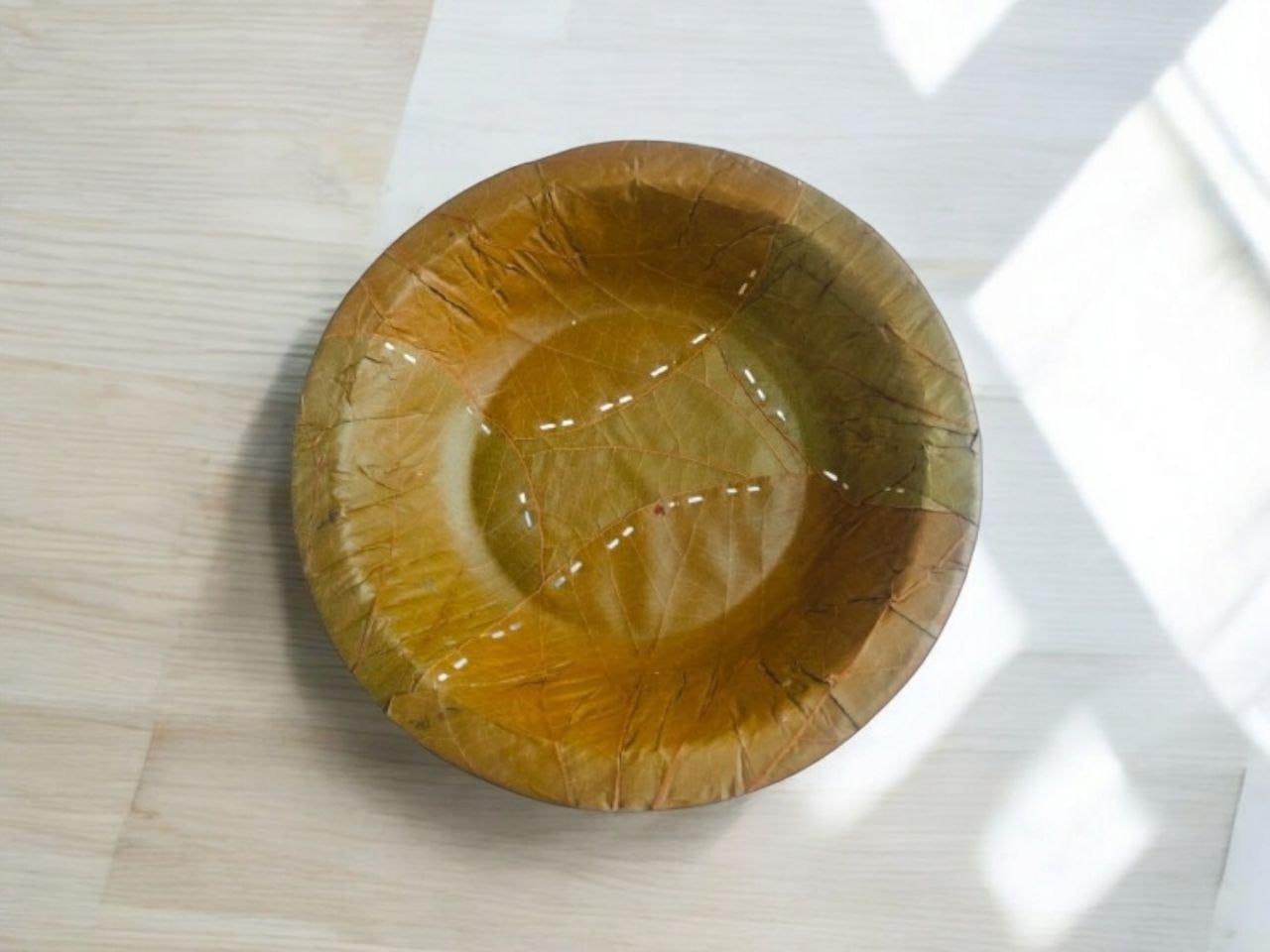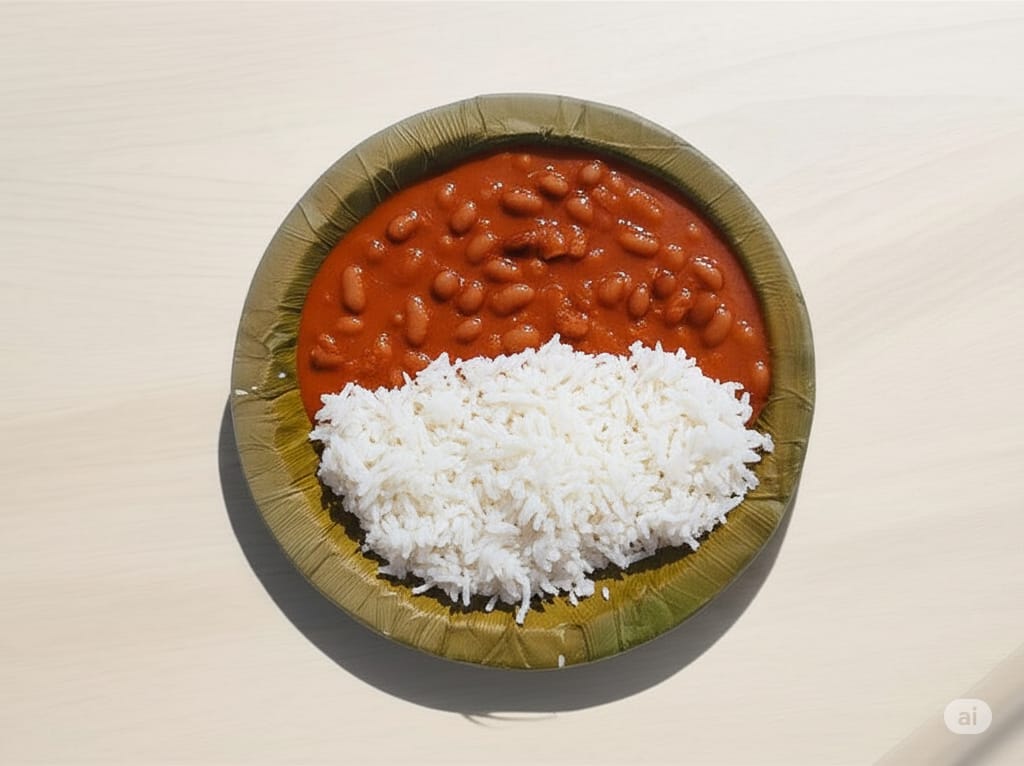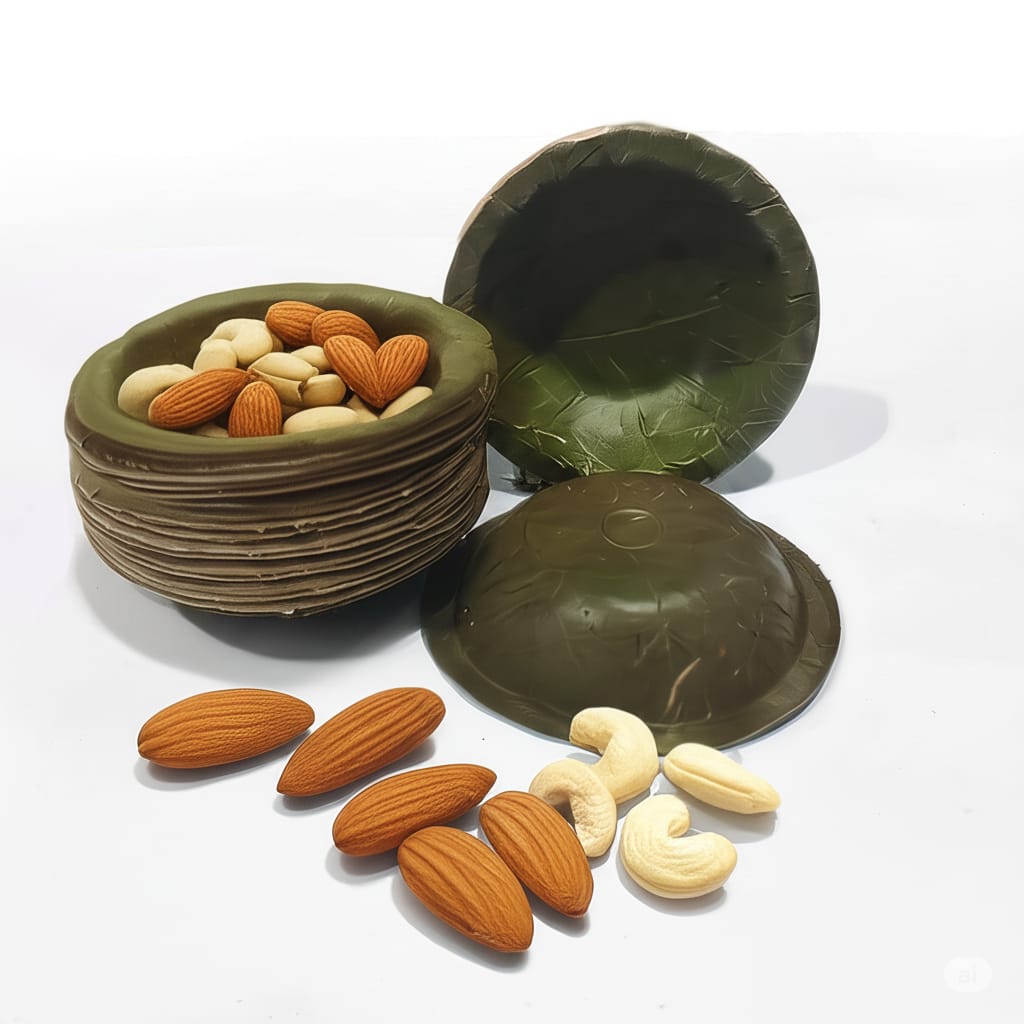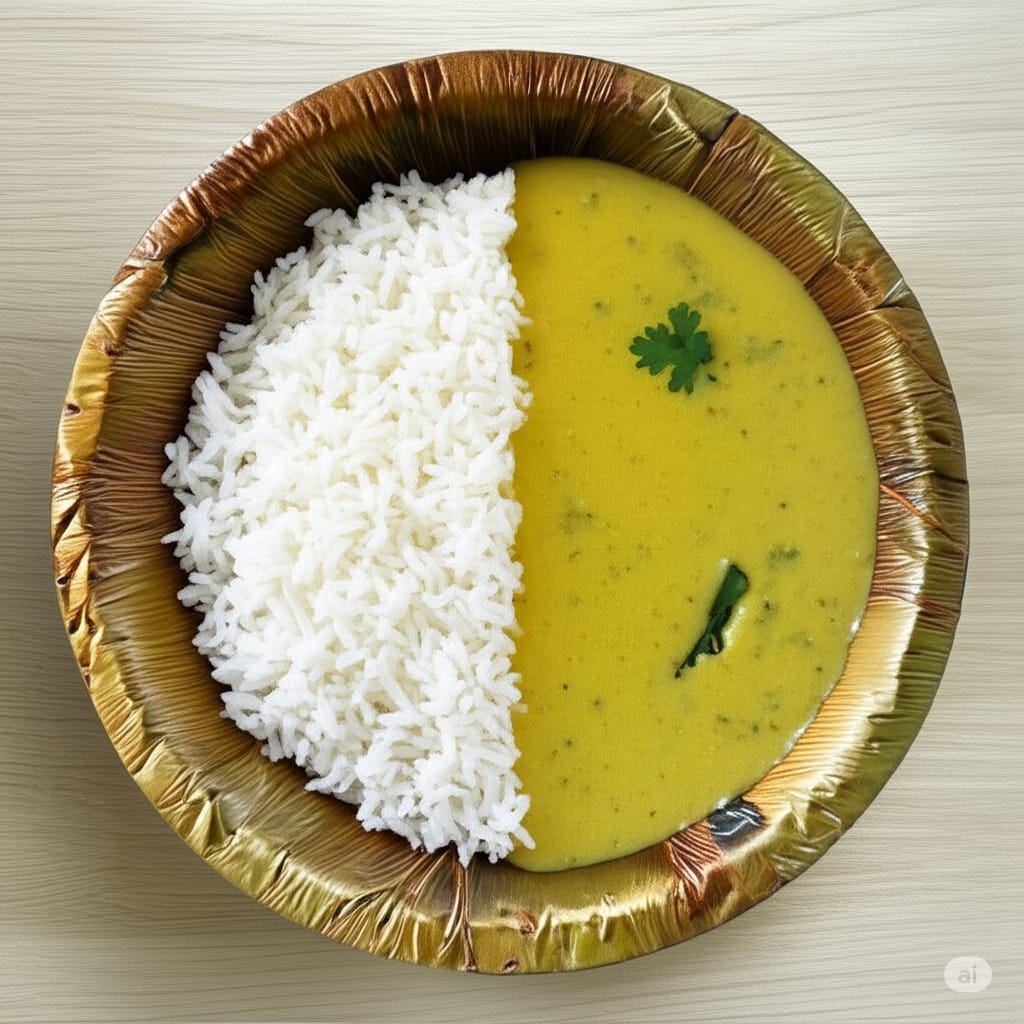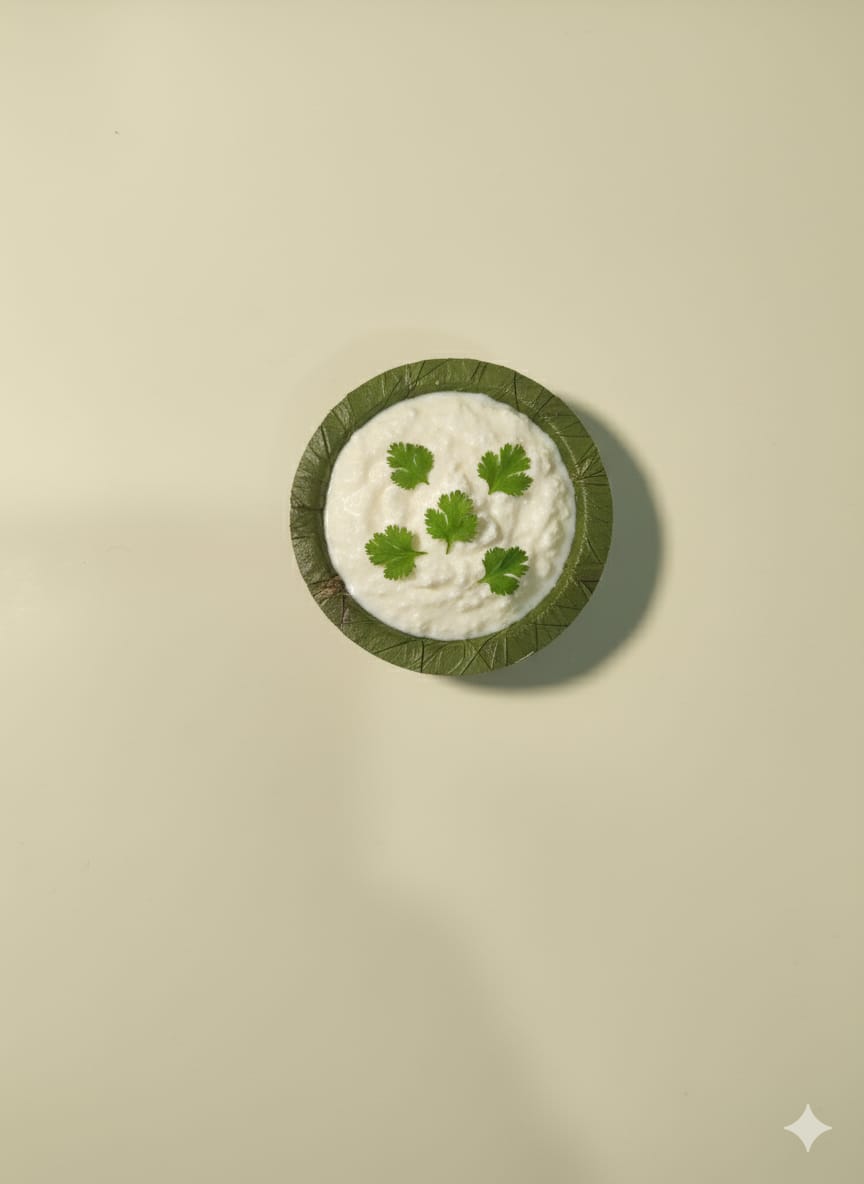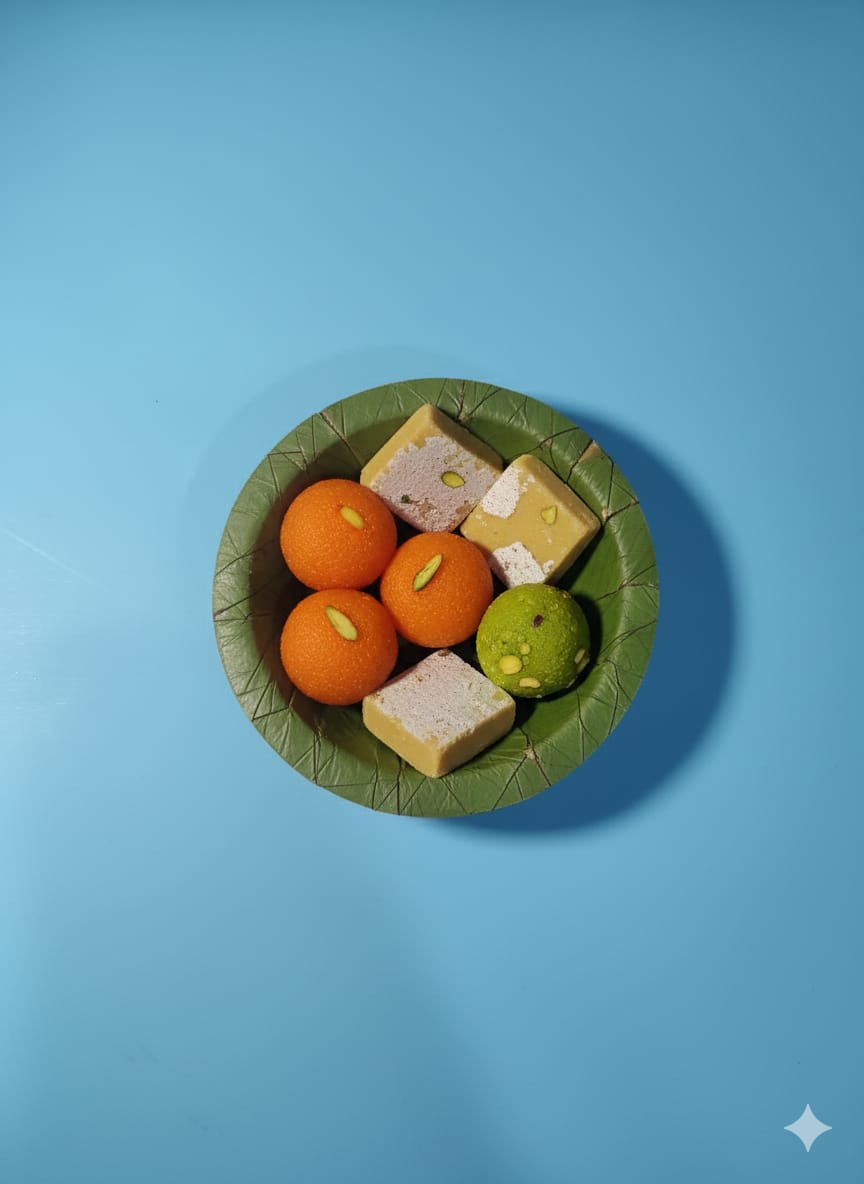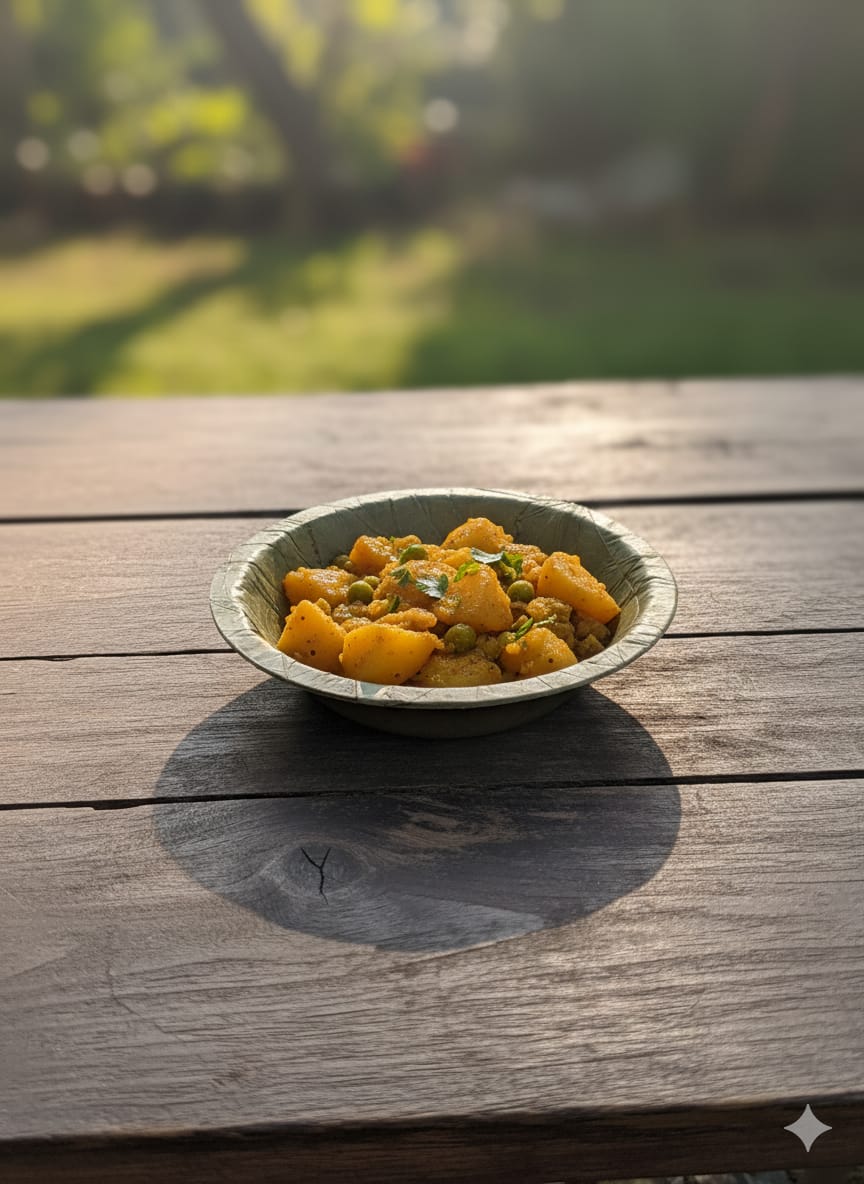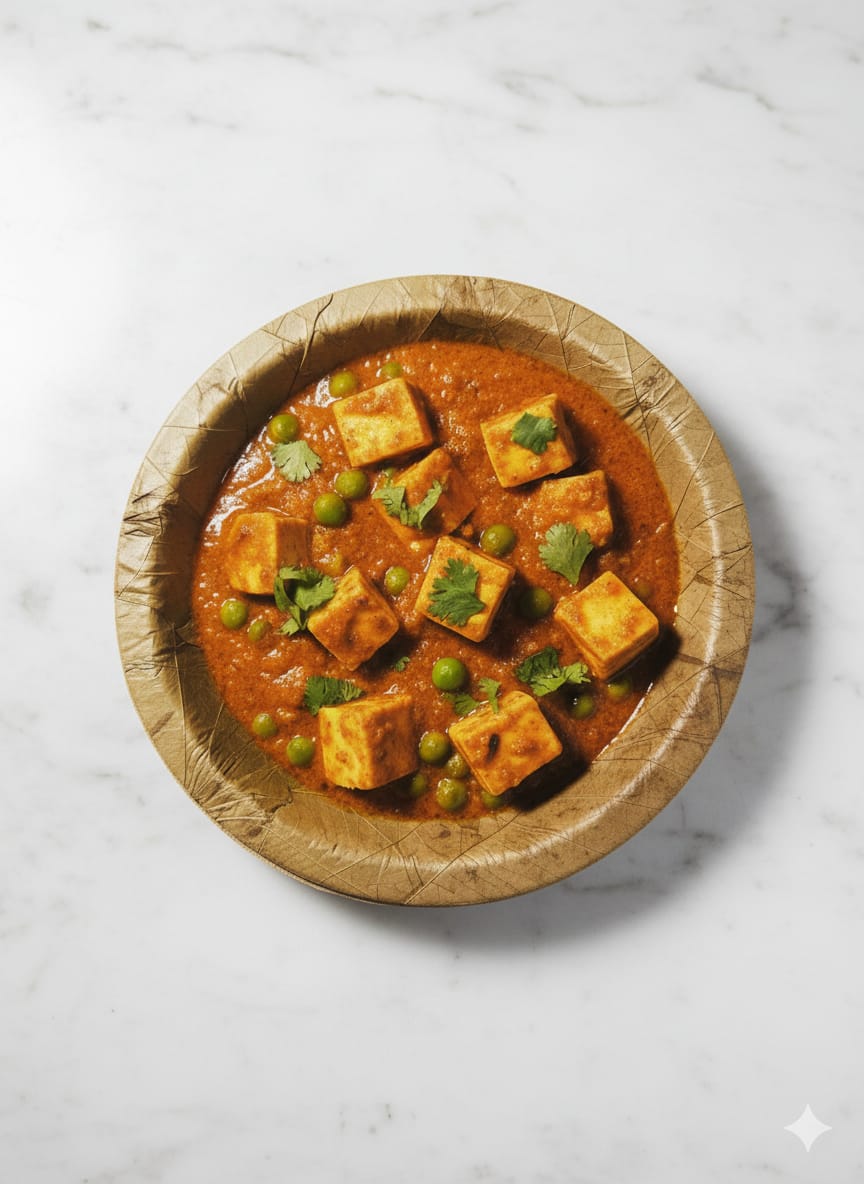Blogs

Leaf It to Nature: The Rise of Eco Catering
Before steel, glass, or plastic ever reached our tables, nature already had it all figured out. In many parts of the world, especially in India and Southeast Asia, eating on leaf plates was a way of life. Our ancestors didn’t just stumble upon this practice — it evolved from necessity, availability, and a deep respect for the environment. Long before the term “eco-friendly” became trendy, people were already doing zero-waste dining like pros! Leaves like banana, sal, and banyan were easily available, large, and strong enough to hold an entire meal. Their smooth, waterproof surface was perfect for hot, oily, or spicy food. They were also easily disposable — just toss them after use, and they’d return to the earth with no harm done. The idea was as simple as it was brilliant. Nature offered plates; people said thank you and used them — no fuss, no pollution. Feasts and festivals in traditional societies were always about community, culture, and shared meals — and leaf plates were central to them. In India, for example, food served during weddings, religious ceremonies, or harvest festivals was often plated on banana or sal leaves. Rows of guests sat together, served in perfect order, with steaming food placed on bright green, freshly cut leaves. The aroma of hot rice and curry mingling with the natural fragrance of the leaf added something magical to the meal. In South Indian temples, especially during major celebrations, the ritual of serving prasadam (blessed food) on banana leaves still continues. It isn’t just a way to serve food — it’s part of the spiritual experience. The belief is that eating on leaves, especially those offered to deities, purifies both the food and the person. You’ll often hear elders say, “Food tastes better on a leaf,” and frankly, they’re not wrong. One of the smartest things about using leaf plates was how sustainable the entire practice was. Leaves are biodegradable — they return to the soil and nourish it, unlike plastic or styrofoam that sticks around for centuries. Even the process of making a traditional leaf plate was eco-friendly. In villages, people stitched together leaves using twigs or thin stems — no machines, no pollution, just craftsmanship and patience. Communities would gather to collect leaves in the morning, especially before big events. It was not just preparation — it was tradition, a bonding activity for neighbors and families. Everyone had a role: someone collected leaves, another cleaned them, some stitched them together. It was a production line powered by love, laughter, and leaf juice. The best part? The leaf plates were strong. You could pile on rice, curry, pickles, sweets — the whole festive spread — and it held steady. Plus, no dishes to wash after the event. Just feed the leftovers (and the plates!) to cows or compost pits. Win-win for everyone. Though leaf plates slowly disappeared with the arrival of aluminum trays and plastic disposables, they're now making a fantastic comeback. With the world waking up to the environmental costs of plastic, caterers and eco-conscious hosts are returning to the wisdom of the past. Modern leaf plates come in sleeker designs — stitched with better tools, often reinforced with natural glue, and even printed with natural dyes for that decorative touch. Ironically, what was once considered “rural” or “outdated” is now the face of premium eco-luxury dining. Fancy events, eco-themed weddings, organic food fests — they’re all embracing the leafy vibe. And it’s not just in Asia anymore — leaf plates are flying across borders, becoming favorites in eco-markets across Europe, the US, and Australia. Why Plastic is Losing Its Place on the Table For years, plastic ruled our tables without competition, mostly because it was cheap, light, and easy to throw away. The world began waking up to the mess that plastic left behind—and trust me, it wasn’t a small mess. People began questioning the cost of convenience—and it wasn’t just about money anymore. As plastic began to lose its shine, eco-friendly options walked in with style and substance. Weddings started showcasing eco-themes, where guests proudly ate off compostable plates with wooden forks. With so many cool and compostable options, it’s clear that plastic has overstayed its welcome on our tables. Of course, the transition isn’t perfect and doesn’t happen overnight—but it’s happening faster than we ever thought. The end of plastic on the table isn’t about saying goodbye to ease, but about saying hello to smarter solutions. So next time you set the table, think of it as more than just placing a plate—it’s casting a vote for the planet. Leaf Plate Innovations Modern Caterers Love Catering isn’t just about taste anymore—it’s about experience, presentation, and making a positive impact on the planet. Eco-conscious clients now ask for biodegradable options as part of their wedding and event planning checklists. Yes, even leaf plates are getting tech upgrades and modern twists—and we love every bit of this innovation. Imagine serving sushi or pasta on a sleek, oval banana leaf plate—it’s classy and eco-chic at the same time! You might think stylish green plates would cost a fortune, but the reality is refreshingly affordable for caterers. Clients also notice these efforts and are more likely to rehire caterers who promote responsible and ethical food services. Case Study: A Wedding Caterer’s Sustainable Makeover in Leaf Plates For years, Shree Banquets—a well-known wedding caterer—served delicious food on plastic plates. The food? Loved. The waste? Not so much. After every grand event, piles of non-biodegradable waste cluttered the venue. Staff struggled with cleanup, and eco-conscious guests quietly raised eyebrows. That’s when the team decided: It’s time for a change. They had no idea their sustainable makeover would be such a hit—not just with the earth, but with their brand too! Plastic plates were cheap and easy but came at a hidden cost: environmental guilt. One wedding alone generated hundreds of plates that would sit in landfills for decades. The caterer realized they weren’t just feeding guests; they were feeding into a growing environmental crisis. That’s when the leaf plate idea sprouted—literally and figuratively. The team discovered palm leaf plates made from fallen areca palm leaves. No trees were cut. No chemicals used. And yet, these plates looked elegant, rustic, and perfect for Indian wedding aesthetics. Unlike flimsy paper or unattractive plastic, leaf plates added charm to the food presentation. Plus, they were sturdy enough to hold curries, rice, and even hot gulab jamuns without bending. Initially, there were worries: Would the guests find them odd? Would they leak or collapse mid-meal? But after a few trial runs at smaller events, the reviews were glowing. Guests were fascinated, and Instagram was buzzing with posts tagged #EcoWedding and #LeafItToUs. It became more than just a switch—it became a statement. Within six months of the switch, Shree Banquets saw some exciting numbers. Their waste output was down by 60%, disposal was quicker, and even their cost margins balanced out thanks to fewer clean-up hoA Tale as Old as Time (And Trees!)
From Forests to Festivals: Where Leaves Met Community
Sustainable Before It Was Cool
The Comeback of a Cultural Hero
The dining tables are getting a much-needed makeover—and plastic is being politely shown the exit door!A Plastic Past: How It Took Over Our Plates
People loved the convenience of using plastic plates, cups, and cutlery, especially during parties, picnics, and weddings.
You could eat, crumple, and toss—it was almost magical for anyone avoiding dishwashing at all costs!
Restaurants, caterers, and street vendors also found plastic perfect for serving large crowds on a budget.
From juice in plastic cups to food in plastic trays, we didn’t even question where all that plastic ended up.
But soon, nature started giving us not-so-subtle hints that our love story with plastic wasn’t so perfect after all.Wake-Up Call from Mother Nature
Oceans were choking with discarded plastic spoons and wrappers that traveled far from their picnic sites.
Animals mistook plastic for food, and landfills grew mountains of plastic waste that would outlive generations.
It turned out that plastic, while handy, doesn’t disappear after use—it lingers for hundreds of years!
And the worst part? Microplastics, those tiny invisible villains, started showing up in water, food, and even human blood.
Suddenly, that cheap plate at last weekend’s party didn’t feel so harmless anymore.
Environmentalists, scientists, and even everyday moms started saying, “Hey, maybe it’s time to try something better.”
Laws were passed to ban single-use plastics, and alternatives started popping up like mushrooms after the rain.Greener Plates, Happier Tables
Banana leaves, sugarcane bagasse, palm leaf plates, and even edible cutlery made an entrance—and won hearts instantly.
These alternatives looked natural, felt good to use, and didn’t leave guilt behind once the meal ended.
Caterers and event planners found that people were actually more impressed by leaf plates than plastic trays.
And let’s be honest, a thali served on a big green banana leaf just feels more delicious and traditional!
Even street vendors switched to paper cups and leaf bowls, earning applause from customers and clean-up crews.
The shift wasn’t just about the environment—it was about making meals more meaningful and mess-free.What’s Next? A Table Set for Change
Even kids in schools are learning about sustainability and asking for lunchboxes free of plastic packaging.
Big brands and restaurants are also waking up, ditching plastic straws and packing food in biodegradable boxes.
Social media plays a huge role too, as food bloggers and influencers promote zero-waste picnics and eco-dining setups.
Suddenly, being green is trendy—and no one wants to be the person using plastic at a planet-friendly party!
Reusable containers, recyclable trays, and plant-based packaging are becoming a new normal, not just a fancy choice.
And people feel good about it, because who doesn’t want to help the planet while enjoying their favorite food?
We’re not losing anything—we’re gaining cleaner oceans, greener events, and a future our kids can actually enjoy.
And in that vote, plastic doesn’t even make it to the ballot anymore.
The Green Twist to Fine DiningThe Eco-Friendly Wave in Catering
Modern caterers are embracing eco-friendly leaf plates not only for their looks but also their sustainability benefits.
These natural plates made from banana, sal, or areca leaves decompose fast and reduce plastic waste dramatically at events.
Guests are loving the rustic charm of these plates, which add a dash of culture and freshness to every bite.
It’s heartwarming to see elegant food served on plates that won’t sit in landfills for hundreds of years.
Leaf plates perfectly fit into zero-waste or green wedding themes, which are gaining popularity across cities and villages alike.
Their natural design also means fewer chemicals are involved compared to processed disposable plates made from foam or plastic.
As more people care about where their products come from, caterers find leaf plates to be a trendy, ethical choice.
Food served on a leaf plate also gives that authentic, traditional vibe that guests instantly appreciate and remember.Tech Meets Tradition in Tableware
New leaf plate designs come with water-resistant coatings made from natural wax, so nothing leaks or soaks through.
Some companies now offer compartment-style leaf plates for multi-course meals, solving the classic “where-do-I-put-the-sambar” issue.
Heat pressing methods make these plates smoother, sturdier, and more uniform while keeping their raw, leafy charm intact.
Vendors also laser cut the plates for a polished shape and size, which helps caterers present their dishes professionally.
Some leaf plate brands now collaborate with caterers to customize shapes, branding, or even engrave logos onto the leaves.
These innovations help caterers stand out and give their events a signature look that guests won’t stop talking about.
With better durability and smarter design, modern leaf plates can handle everything from gourmet food to greasy street snacks.
It’s an upgrade that respects both tradition and technology—and that’s something today’s caterers truly appreciate.Cost-Effective and Crowd-Pleasing
Leaf plates are surprisingly budget-friendly, especially when ordered in bulk from sustainable farms or women-led rural units.
Many caterers save costs on waste disposal because biodegradable plates require no post-event scrubbing or heavy cleanup teams.
They simply collect the used plates and compost them or hand them over to local animal shelters or farms as fodder.
This lightens the workload after events and brings down water usage, chemical cleaning, and dishwashing manpower needs.
In fact, some caterers report getting extra tips or referrals just for using leaf plates and going the extra green mile.
And let’s be honest—serving biryani or dessert on a fragrant sal leaf plate just tastes and feels better somehow.
People love Instagramming their food, and a well-served dish on a natural leaf plate gets more likes than plastic ever could.
When sustainability meets visual appeal, it becomes a powerful marketing tool that benefits both the planet and the business.
From Plastic Piles to Palm Elegance – A Green Turn Worth Celebrating!The Plastic Problem at the Party
The Big Switch: Why Leaf Plates?
Numbers, Nods, and New Business



